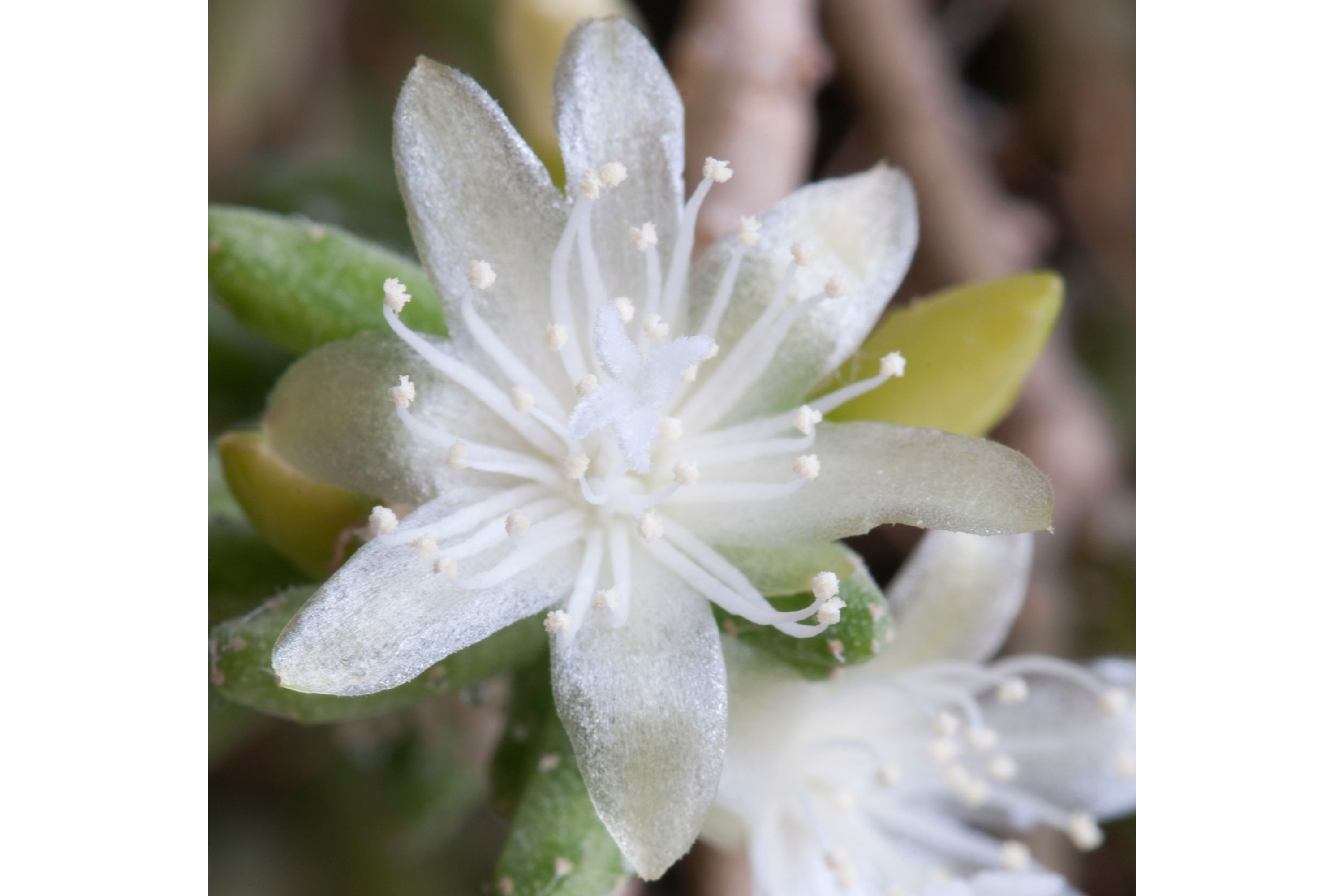Clumpy mistletoe
(Rhipsalis mesembryanthemoides)

Description
Rhipsalis mesembryanthemoides is a cactus in the genus Rhipsalis of the family Cactaceae. The first description was in 1821 by Adrian Hardy Haworth. The shoots are reminiscent of the plants of the genus Mesembryanthemum, hence the epithet mesembryanthemoides. Rhipsalis mesembryanthemoides is an epiphytic plant with strong stems covered by tiny branchlets. Initially this plant grows erect; later it is pendent. The main branches are elongated, cylindrical and woody, 10 to 20 inches long and 1 to 2 millimeters in diameter. The white flowers appear at areoles of the branchlets. They are 8 millimeters long and reach a diameter of 15 millimeters. The short-oblong fruits are white, about 5 millimeters long. This species is widespread in the Brazilian state of Rio de Janeiro, on both sides of the Baja de Guanabara, at an altitude below 600 metres (2,000 ft) above sea level.. Rhipsalis is a genus of epiphytic flowering plants in the cactus family, typically known as mistletoe cacti. They are found in parts of Central America, the Caribbean and northern regions of South America. They also inhabit isolated locations in Africa and Asia, and are the only cactus group naturally occurring in the Old World. This is the largest and most widely distributed genus of epiphytic cacti(those which live on other plants without damaging them). The scientific name Rhipsalis derives from the Ancient Greek term for wickerwork, referring to the plants' morphology. The genus was described by Joseph Gaertner in 1788. But when he described the plant, he had in fact not realised it was a cactus. Instead, he assumed he had found a new species of Cassytha, a parasitic laurel from a completely different plant family. Rhipsalis is found as pendulous epiphyte in tropical rainforests, some species may also grow epilithic or, rarely, terrestrial. The genus is found widely in Central America, parts of the Caribbean and a great part of northern and central South America. The center of diversity of Rhipsalis lies in the rainforests of the Mata Atlantica in southeastern Brazil. It is found throughout the New World, and additionally in tropical Africa, Madagascar and Sri Lanka. It is the only cactus with a natural occurrence outside the New World. The morphology of Rhipsalis is very variable. The plants can grow mostly pendent, few grow more or less upright or sprawling.
Taxonomic tree:







